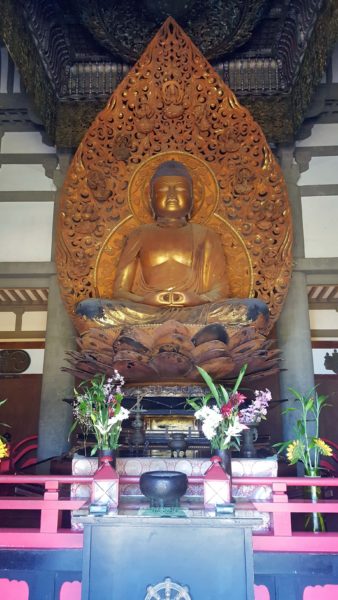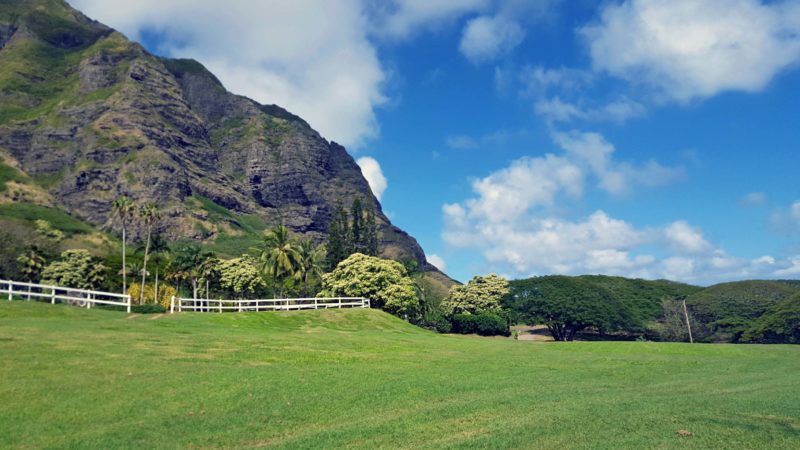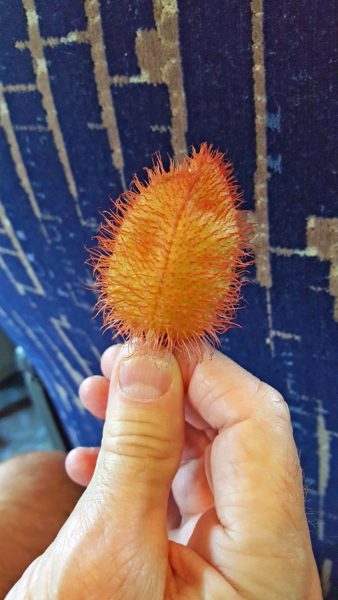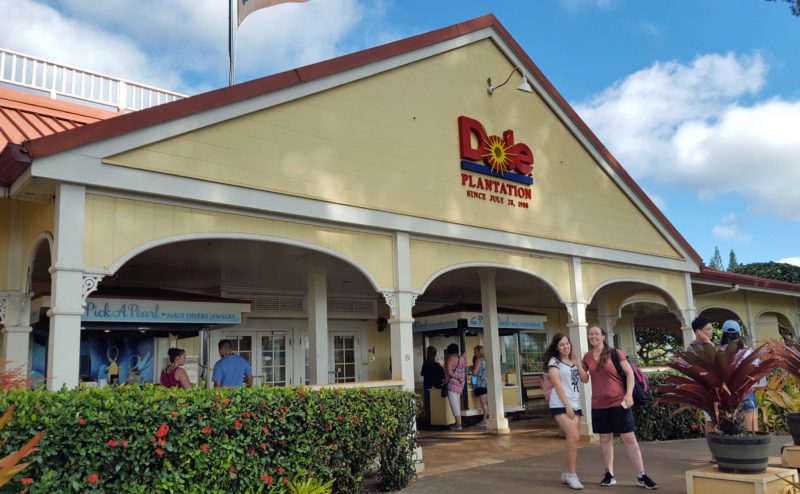Today’s excursion was the Grand Circle Tour. The route took us from Honolulu across the island to the east coast of O’ahu, then up that coast and halfway across the northern coast before heading south again and back to Honolulu. We were on the Kamehameha Highway most of the day.
Our first stop was the Nu’uana Pali Lookout, a 400-foot high cliff overlooking the eastern coast of O’ahu. There was a lot of bamboo growing at the lookout point. Our guide said there’s not much need for bamboo spears any more, so most of the bamboo on the islands is protected, and most of what is used becomes fishing poles. The winds often blow at 80-100 mph at this lookout but today, the wind was only blowing at about 60 mph–we didn’t have to hold on to anything to keep from falling over, but walking into the wind was a challenge.

Kamehameha’s army dropped enemy soldiers over this cliff. Some soldiers voluntarily jumped to their death because they didn’t want to be ruled by Kamehameha.

At least it was a warm 60 mph wind.
Our next stop was the Buddhist Bhyodo-In Temple.

The temple is beautifully set with the mountains at its back and an ocean view in the front.

To ring the temple bell, pull the log back, then let it go to strike the bell–a circle marks the spot. Ringing the bell drives the evil spirits away.

We had to remove our shoes to enter the temple. Inside we saw this Buddha figure.

Koi fish are plentiful in the streams around the temple. The black swans are native to Australia.
Our lunch break was at the Kualoa Ranch, a site sacred to native Hawaiians from the 13th to the 18th century. Hawaiian chiefs trained their sons in this sacred place and, in respect, ships dropped their sails when they passed this area. The first 622 acres of the ranch were purchased in 1850 from King Kamehameha III for $1,300. The ranch now includes about 4,000 acres. Sugar cane crops were not successful here, so the Kualoa mill closed in 1870. The ruins of the original sugar mill can still be seen along the Kamehameha Highway. In 1941, the U.S. military occupied the land and used it for the Kualoa Airfield. After World War II, the property was returned to the descendants of the original owner. They decided to develop it as a nature preserve.

We had a tram tour of the ranch. Naturally, it’s beautiful, but it’s too big for a photo. Here’s a view from where we ate lunch.

The pandanus tree is planted along shorelines to break the wind and to provide shelter from storms. Because of the appearance of its trunk, it is also called the “screw pine.” The trunks are mostly hidden by the leaves, but look closely at the tree trunk in the left center of the picture to see some of the screw appearance.

This exotic-looking bird joined us for lunch. Perhaps a member of the jay family?
We had a wonderful drive up the east coast to the north coast of O’ahu.

At many places like this, we would see a car parked on the side of the road while its occupants were swimming in the ocean. There seems to be plenty of room for everyone to enjoy a private beach whenever they want to.

Just another awesome view, south of the Kualoa Ranch.

Look at that rainforest vegetation! This side of the island averages more than 130 inches of rainfall annually.

Near the Kualoa Ranch, you can see Chinaman’s Hat Island (left of Ted) and Turtle Rock (far left of Ted) in the ocean. You can see Ted and me too!

The Hawaiian beaches are out of this world! It’s heavenly for a Pisces like me. The two people in the left center have the beach to themselves.

This is the fruit of the lipstick tree. When the sac is cracked open, it releases a red dye for lips and/or clothing.

There were high surf warnings out for the north shores of the island in the past few days. Yesterday, the waves were 30 feet high; today they are only about 10-12 feet high. Use the surfers as scale figures.

Pineapple is a major crop in Hawai’i, but there are no pineapple canneries. The fruit is shipped to California for canning. Note: we don’t know those two girls in the foreground, but they look like they’re enjoying themselves.

It’s very yellow in the Dole pineapple store.

We saw a demonstration on how to cut a pineapple and we learned how to tell when a pineapple is ripe. (All the eyes are the same size; it “gives” about 1/16″ when squeezed; it doesn’t smell too sweet; the bottom is not pink.)

Spam is the state food of Hawai’i, due to the lack of raised meat on the islands. Every year, there is a Spam Jam in Honolulu with competitions for the best Spam recipes.
Again, Ted and I had a wonderful day. I’m beginning to be sorry it’s almost time to go home. Am I becoming an Island Girl?